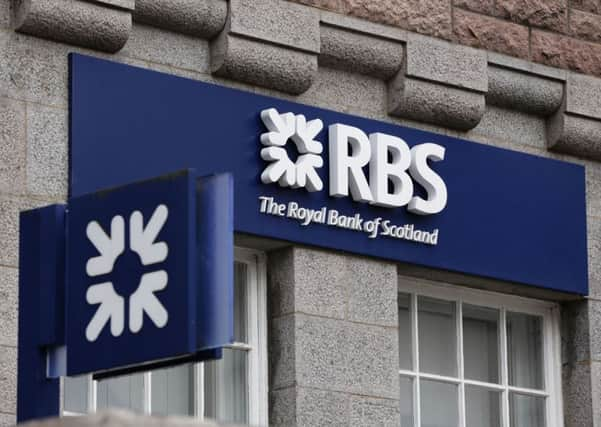Jeff Salway: High street branches are banks' best defence


The branches affected are in the NatWest network south of the Border, but the closure of dozens of Scottish rural branches over the past two years have left several villages and towns without banking facilities.
Barclays and HSBC are trimming their branch networks too, the latter by some 200. This obviously leaves even more loyal customers without a branch, a problem in particular for those who don’t have easy access to the internet and for small local businesses (though some banks are working with supermarkets and the Post Office to ensure facilities remain available in certain areas).
Advertisement
Hide AdAdvertisement
Hide AdThe rationale given for the closures was, as ever, that people are increasingly comfortable with banking online and by phone. That makes sense, up to a point – but will that rationale still hold strong when new online-only banks can do the digital stuff so much better?
Banks are developing mobile apps and investing in other digital services, often with impressive results. But they risk being outflanked, because the digital-only banks arriving on the scene are likely to be better at this stuff. The newcomers don’t have outdated IT systems dragging them down, or the overheads faced by the high street brands.
While the likes of Metro, Virgin and Tesco Bank have aped the traditional model in their challenge to the established brands, technology means the next wave of newcomers has the potential to shake up the market by offering something genuinely different.
They’re also benefiting from the lowering of regulatory barriers, with capital requirements for small banks reduced and the regulator last year launching a unit specifically to support potential new entrants.
The banks will point to brand strength, but digital disruption has a habit of neutralising that. Digital services will also enable the new firms with the best understanding of the data they generate to offer the kind of personalised banking service that the big players no longer provide.
Could it be that their branch networks, for all the costs, may eventually prove the best selling point the traditional banks can offer? Branches give banks a chance to connect with customers in a way that technology can’t, but only if they can reform a culture that continues to exploit customers rather than serve them.
A 2006 report by the Economist Intelligence Unit said banks recognised that their branches “are not just cost centres but sources of new business and potential profit”. Back then we could never have envisaged the technological developments of the past decade, and we couldn’t have imagined the impact of the smartphone revolution.
The banks, with a recent history of misconduct scandals that underlines their contempt for customers, are there for the taking. Up to now they’ve been protected by the virtual impossibility of scaling the barriers to entry into the banking market.
Those barriers are coming down. The high street giants will enjoy their dominance for a while yet, and some of the challengers will fail. But the challenge is stiffening, and not before time.